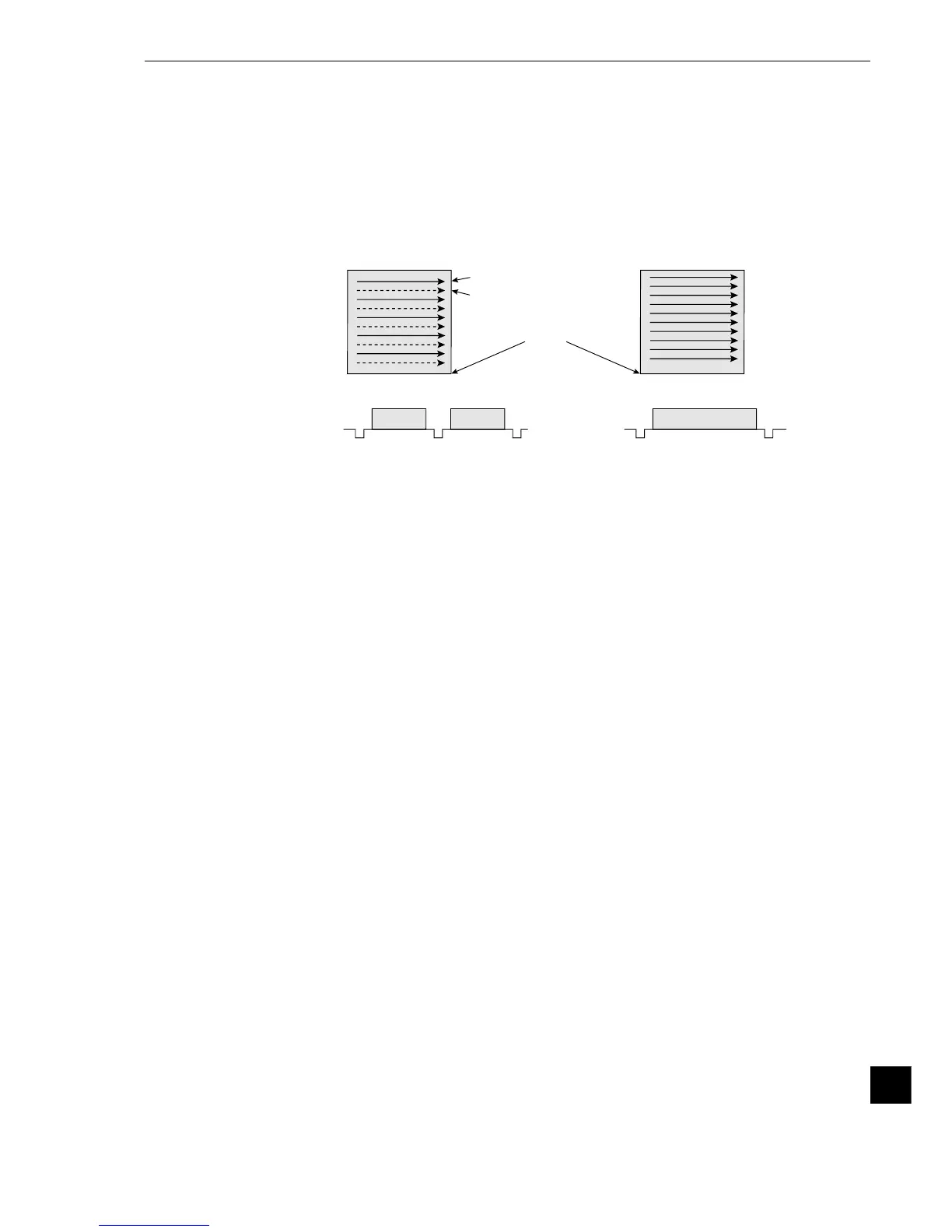G-5
G
Glossary
[G]
Ë Gray scale check using the normalization correlation method
Even when the IV-S20 is looking at the same object as the object used for the reference image, the new
target image and the previously stored reference image may not match completely, due to variations in
the illumination conditions and the ambient light.
In order to check the resemblance between the two sets of image data, the normalization correlation
method can be used.
In order to check whether or not the levels match using the normalization correlation method, the system
slides the reference image one pixel at a time in the measurement objective range (measurement win-
dow), and calculates correlation value between the reference image and the target image. The position
where the maximum correlation value can be obtained is treated as the position where the target image
might exist, and the IV-S20 calculates resemblance level at this position.
The normalization correlation method also can be applied to binary images. However, gray scale images
(images with shades of light) contain large volumes of information, compared with binary images (images
with 256 levels of gray have 256 times the volume of information than in binary images). Therefore, gray-
scale images offer more precision and more reliable results.
However, the larger the information volume, the larger the number of calculations that must be made for
correlation values. This means that high speed processing hardware and software are required to use
the normalization correlation method on the gray scale images.
Ë Full pixel reading (progressive scan)
A system which reads all of pixels of image information from the CCD element one after another is
referred to as "full pixel reading system." This system provides the same high resolution for moving
objects as it does for static objects.
On the other hand, conventional CCDs using the NTSC scanning technique must read an object two
times. First the odd lines are read and then the even lines. Therefore, NTSC system produces blurry
images of moving objects. In order to solve this problem, the NTSC system can read only the odd lines.
The disadvantage is that only half the resolution is available.

